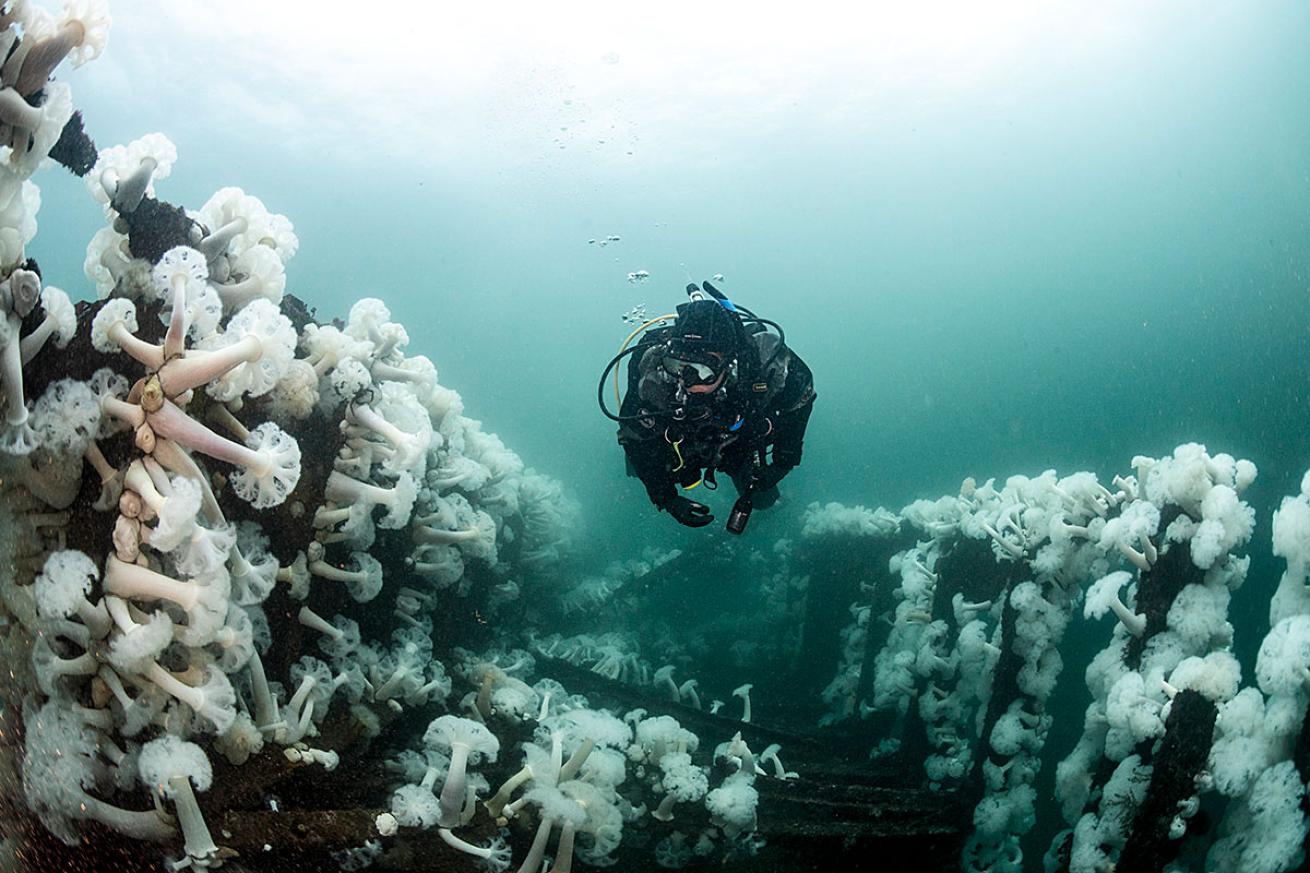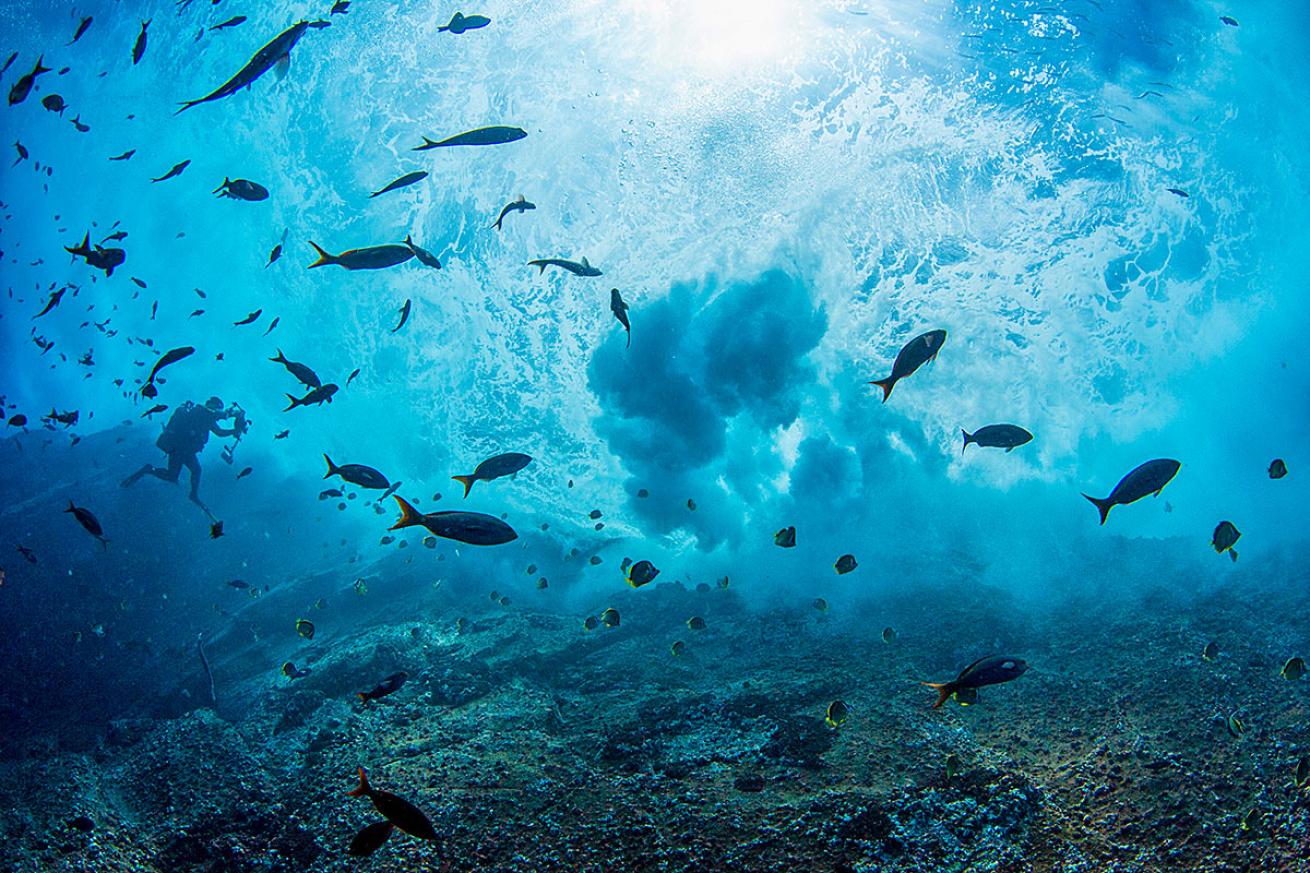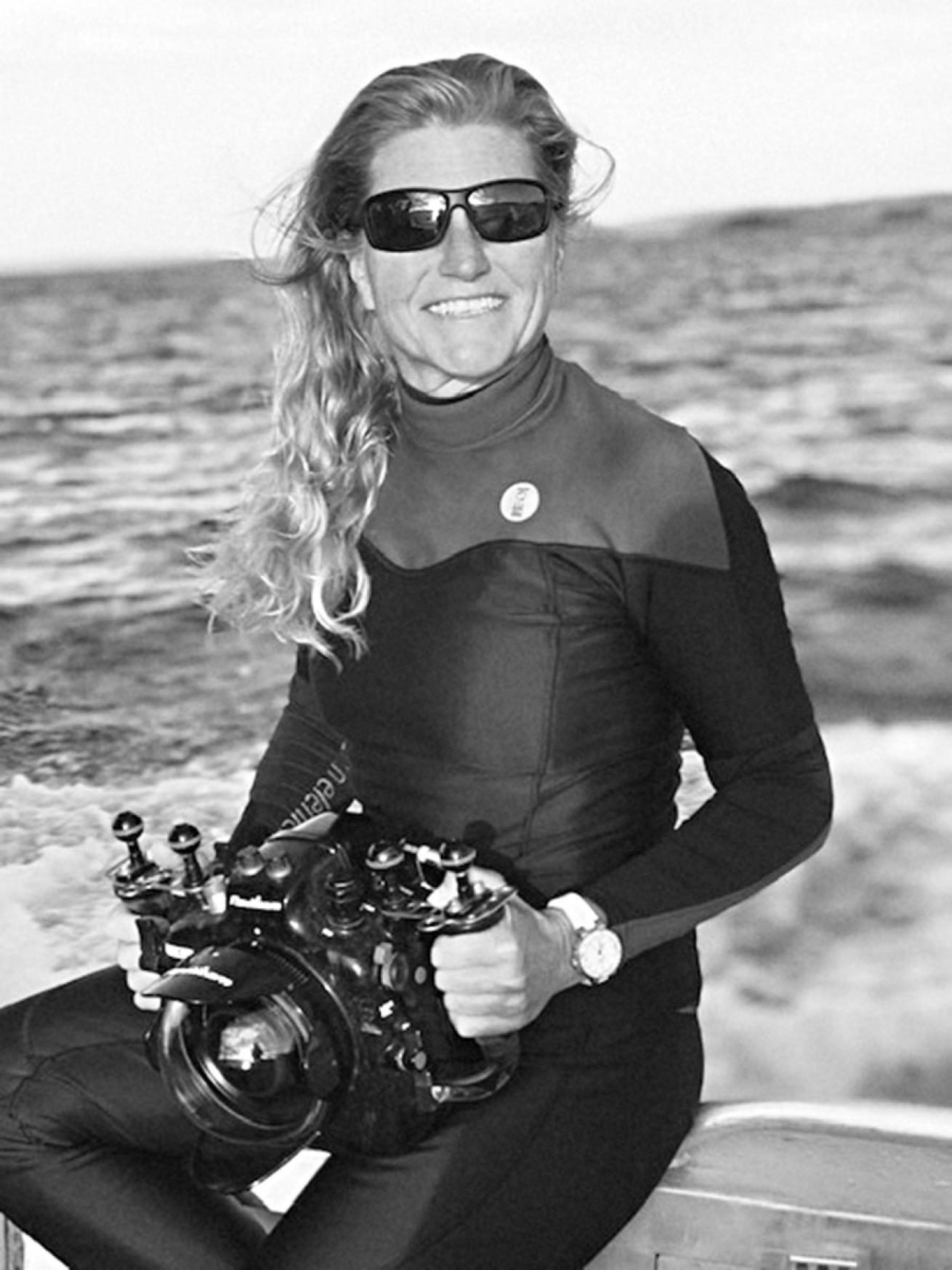Tips and Tricks for Improving Your Buoyancy on Every Dive

Annie CrawleyAre you practicing neutral buoyancy?
Whether you’re exploring local diving or planning a trip to fly with the mantas, finding the bliss of “zero gravity” on every dive will be your ticket to exploring our underwater world. Building your arsenal of self-awareness skills will increase your comfort level while conserving your air on every single dive. Everything becomes easier when you master the feeling of weightlessness underwater.
The first steps include self-realization and a critique of what you look and feel like as a diver. If you have to use your hands, take deep breaths or kick your fins to stay in one place, you are not neutrally buoyant. Get your buddy on board for a fun buoyancy dive. Consider filming each other to review your body positioning, and have fun watching yourselves as you learn.
SELF-CHECK ONE: WHERE ARE YOUR HANDS?
Unless you are using your hands to inflate or deflate your BCD or your drysuit, or to equalize your ears or mask, imagine your hands are bungee-tied to your sides or behind your back. Anytime one of your hands leaves your side to make a dog-paddling circle in front of you, it signals, “I am not neutrally buoyant.” Add a little air to your BCD or drysuit. Monitor yourself. Do you need to take a deep breath? Are you kicking to stay in one place? Are you moving your arms? These three criteria help you realize when you are not neutrally buoyant. Add small bursts of air to your BCD or drysuit, and then wait. Resist the urge to use your hands for buoyancy. Do this as you descend, throughout your dive, and as you ascend.
SELF-CHECK TWO: HOW ARE YOU USING YOUR LUNGS?
Practice patience. Imagine yourself descending slowly down a reef. Every time you equalize your ears, you must check your breathing and buoyancy. If you are sinking like a brick, you are using too much weight, which often triggers you to overcompensate with fast, heavy breathing and movements that turn you into a bubble-blowing monster. Being properly weighted is essential to being able to breathe slowly, move slowly and maintain neutral buoyancy throughout your dive.
Scuba diving is the most relaxing sport on the planet when you achieve this Zen-like breathing throughout your dive. Our regulators are designed so that we should never feel as if we need to suck air. If you are sucking, self-diagnose: I am not neutrally buoyant. Use your computer’s depth gauge to help monitor where you are in the water column. Anytime you go down 3 feet, or 1 meter, the air within your suit and your BCD compresses. Use the same three-step self-check process. Can you stay in one place without using your fins, arms or lungs?
Do this throughout your dive. Imagine you are breathing slowly, moving slowly, with all of your equipment streamlined to reduce drag. You are one with the water. Every movement is controlled, slow and thoughtful. If you need to use your arms, lungs or legs to stay in one place, self-diagnose: I am not neutrally buoyant. What do you need to do? Diving is a feeling—until you master the feeling, it takes a bit of thinking to figure out.

Annie CrawleyNeutral buoyancy is key to taking good photos and not harming the marine environment.
SELF-CHECK THREE: HOW ARE YOU USING YOUR FINS?
There are several ways to use fins effectively, and they are tied to neutral buoyancy. Usually we learn to kick slowly from the hips, moving our entire legs up and down, to propel us through the water. Take time to practice turning techniques by rotating your hips and turn- ing your legs in one direction or the other without using your hands. Practice blade turning at the surface before descend- ing. As soon as you use your arms underwater instead of your legs, you breathe more heavily. When we are neutral and use only our legs to swim, we breathe more slowly.
Once you move into a deeper understanding and feeling of fins and weightlessness, start using the frog kick. In order to frog kick, you must be neutrally buoyant in a shoulder-down position. Arch your back slightly to have your tail-bone meet your tank. Bend your knees up and, using the back part of your legs, stretch out your lower legs. Engage and rotate your ankles, pushing yourself through the water. If you are negatively buoyant, you cannot glide through the water with this kick. Where are your arms? How are you breathing? What are your fins doing? Become aware of how all of these work together for your benefit. Practice swimming backward using your fins in the opposite direction. The ultimate neutrally buoyant diver can do a “helicopter turn,” perfected by cave and cavern divers—a 360-degree, fully horizontal circle underwater using only your legs and fins to turn.
Imagine you are swimming over a sandy bottom. Look back at your fins. Are you creating a desert storm? We can damage the marine environment with one kick of our fins. Divers need to have total awareness, especially in fragile environments. Our fins are an extension of our legs. Pay attention; you should be able to feel your fins on every dive, where they are and how you are controlling them. If you need to fin to stay in one place, this signals “I am not neutrally buoyant.”
When you can achieve zero gravity on every dive, you conserve air, improve comfort and so much more. After Open Water Diver, consider continuing your education with a Peak Performance Buoyancy specialty course. It’s fun and is the foundation for imaging, conservation and all other diving.

Courtesy Annie CrawleyAnnie Crawley is a PADI Master Scuba Diver Trainer who's been instructing for 26 years, and a professional underwater filmmaker and photographer.
Pro Tips
• Master your ascent —As you ascend, you must release the air in your BCD or drysuit—anticipate this by paying attention to your computer and depth. When releasing air, you don’t have as much control as when adding in short bursts. After releasing air on ascent, you will often need to reestablish neutral buoyancy and add air back into your BCD or drysuit.
• Observe other divers — You can always pick out the ones who are neutrally buoyant versus those who might be over-weighted. Divers swimming vertically through the water in a hips-or feet-down position typically are over-weighted; streamlined divers moving effortlessly through the water tend to be neutral. Head to a pool when you purchase a new wetsuit or drysuit before diving into open water. Dive professionals at your local dive shop are always willing to help. You should float at eye level while holding a normal breath with your BCD empty, so when you exhale, you slowly sink. This gives you a baseline of where you need to start your dive. The first few feet can be the most challenging place if you have a thicker wetsuit because it needs to compress a bit before becoming negative. When diving with aluminum tanks, your buoyancy will change by about 6 pounds because the tank becomes more buoyant as you use your air. (If diving with a steel tank, buoyancy only changes by about 2 pounds.) Keep in mind you must weight yourself with enough weight for the end of your dive, to be able to comfortably make your safety stop.










